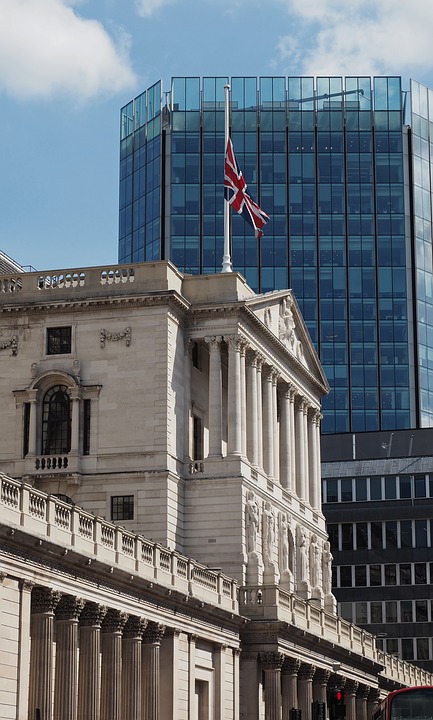- Loans: Only half of businesses likely to take up government subsidised business loans
- Cash: Two-thirds of businesses have less than £50k cash and are likely to run out of money before Easter
- Revenues: 80% report falling revenues between 40-50% in March
- Time: 45% of owners believe it will take at least a year, if not two, for the business environment to normalise
- Crisis: 63% liken coronavirus pandemic to the global financial crisis in 2008
Business finance lender MarketFinance sought the views of business owners following the wide ranging measures announced by the Treasury recently. Despite the sizeable fiscal stimulus, more than two thirds (67%) believe funds will not reach them in time and they will run out of cash before Easter (12thApril).
Loans
Only half (52%) of UK businesses are considering taking advantage of the Coronavirus Business Interruption Loan Scheme (CBILS which offers up to £5m, interest free for the first year, over 6 years) to shore up their businesses. Because most businesses (67%) have a pre-existing loan, their biggest concern (36%) is making repayments for any additional loan. Invoice finance (borrowing against invoices on completed work) ranked highest as an alternative to taking a loan, with 48% considering this option over the next 12 months, to avoid the addition debt burden.
Cash flow
With revenue at companies across the country being hit hard, 80% reported a decrease this month of between 40-50%. They are seeking immediate measures to ease this pressure on cash flow. Business owners ranked a larger overdraft facility as first preference before seeking a business credit card and in third place, using invoice finance as a means to inject working capital into the business.
Anil Stocker, CEO at MarketFinance, commented: “Business owners are uncertain on revenue numbers for this year with a third expecting at least a 50% drop in sales and, rightly, weary of taking on more loans that they might not be able to pay back. It’s important to realise that in the fine print, many banks will ask for additional security and Personal Guarantees for loan amounts greater than £250,000 of borrowings.
“The number of businesses that believe they won’t make it to Easter has doubled from a third to two thirds despite the Treasury’s announcements. Time is of essence. It is imperative that businesses are made aware on how to access the measures they have announced but also to widen the range of finance options available to them”.
Advice
Most (35%) business owners are turning to their accountants for advice on what to do next before consulting their friends and family (21%). Only one in six are seeking advice from their bank manager on what to do. Business owners feel their accountants are the most accessible given the remote working environment.
Accountant Rashesh Joshi at Alexander Rosse commented: “The government headlines from last week covered numerous initiatives to be implemented such as the CBILS scheme, the job retention scheme and a new lending scheme facility for larger firms amongst a raft of other measures. The reality on the ground is unfortunately unlike the rapid spread of the COVID-19 virus.
“We have been touch with a number of the accredited lenders and our colleagues at larger accounting practices. Feedback, information and practicalities of the application process and lending criteria are decisively in slow motion. It seems large institutions with all their resources had no contingency plans in place. We are aware of challenger banks and other businesses who could act quicker but have been frustratingly left out of the original process (but now invited) thereby losing further critical time as highlighted in MarketFinance’s research.”
Rashesh added: We are partnering with our clients to help with their cashflow forecasts, rationale for the loan application, contingency plans, how they would cope with self-isolating staff and a whole raft of questions that the banks will ask before they will even consider lending. We are encouraging lenders to get with the reality on the ground which is frankly brutal. In our view the process needs to be simpler and quicker and bridging finance also made available to small to medium businesses”
Anil Stocker added: “Economies around the world are in a state of shock. In the UK, the government has poured billions in subsidies, grants and guaranteed loans for businesses, but nobody can be sure how well the rescue will work and how this money will be propagated around the small business community. It is critical that business owners have a prepared mindset for all scenarios. They will be heavily reliant on all their advisers – accountants, bankers and boards – to help them navigate the turbulence ahead.”
“The government needs to urgently implement and deploy their policy announcements. Business advisers will play a key role in guiding businesses on the best finance options for them. It’s imperative they are up to speed with all the necessary information and nuances of what is available”.
Since 2011, MarketFinance has advanced over £2.9 billion to companies across a range of sizes and sectors, providing working capital and finance for everything from paying staff and suppliers to launching new products or services and accelerating growth.
MarketFinance is backed by Barclays, Santander InnoVentures, European venture capital fund Northzone (invested in Klarna, iZettle and Trustpilot), private equity group MCI Capital (also invested in iZettle, Azimo and Gett) and Viola Credit.
Source: Business Mole










